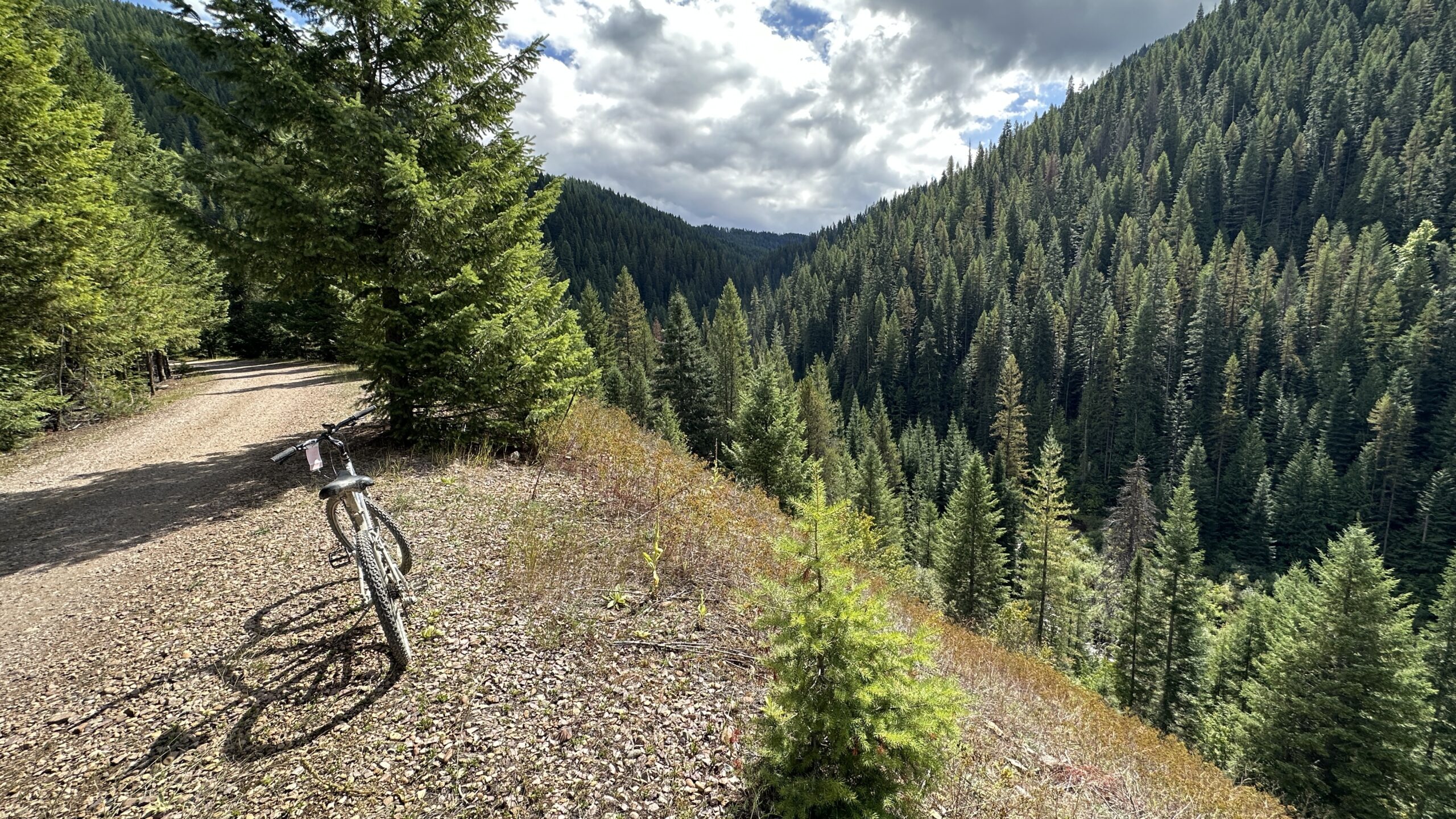The Hiawatha Bike Trail on the Idaho/Montana border offers cyclists a picturesque and exhilarating ride through breathtaking landscapes, combining natural beauty with a rich historical backdrop. Spanning approximately 15 miles, this trail is a gem nestled in the heart of the Bitterroot Mountains, providing an unforgettable biking experience for both everyone – from small children, to grandparents.
The Journey Along the Hiawatha Bike Trail
Embarking on the Hiawatha Bike Trail is like entering a mountain paradise, and immersing yourself into the lush forest of North Idaho. The trail follows the path of the historic Milwaukee Road, a once-thriving railroad line that connected the Midwest to the Pacific Northwest. The biking adventure begins at the East Portal (after paying your trail fee and picking up any rental gear at Lookout Ski Area), known also as the St. Paul Pass Tunnel. Over the course of the 15 mile trail cyclists traverse through a series of tunnels and trestles, each offering a unique experiences and great perspective of the surrounding landscape.
The St. Paul Pass Tunnel, a 1.66-mile-long feat of engineering that plunges riders into absolute darkness, is a highlight of the ride. As you emerge on the other side, a world of lush forests, sparkling streams, and panoramic mountain views unfolds before your eyes. The gentle grade of the trail makes it accessible to riders of all skill levels, ensuring that everyone can revel in the beauty of the journey. Come along with me as I take you on the famous Route of the Hiwatwatha.
Unveiling the History of the Milwaukee Road
The Hiawatha Bike Trail is more than just a scenic route; it’s a journey through history. The trail follows the route of the Milwaukee Road, a historic railroad that played a crucial role in connecting the heartland of America to the Pacific Northwest. Originally constructed in the early 20th century, the Milwaukee Road witnessed the ebb and flow of industry, commerce, and the changing landscape of the American West. It was the longest continually electric rail lines in the United States at one point in its history and, perhaps most notably, during the 1910 fires the tunnels and rail cars were used by residents who lived along the line to escape the roaring inferno and survive.
As you pedal through the remnants of railway infrastructure, including trestles and snowsheds, you can’t help but feel a connection to the pioneers who forged this path. Interpretive signs along the trail provide insights into the history of the Milwaukee Road, offering a fascinating blend of adventure and education.
Rails-to-Trails: Transforming History into Recreation
The Hiawatha Bike Trail is a shining example of the Rails-to-Trails Conservancy’s vision. The Rails-to-Trails movement, which gained momentum in the late 20th century, involves transforming abandoned rail corridors into vibrant recreational trails. This initiative not only preserves the historical legacy of railroads but also provides communities with opportunities for outdoor recreation, promoting health and wellness.
The Rails-to-Trails network in the United States is an extensive web of paths that crisscross the nation, offering diverse experiences for cyclists, hikers, and nature enthusiasts. From urban greenways to rural escapes, these trails breathe new life into forgotten rail lines, allowing people to explore the beauty of America’s landscapes while staying connected to its rich history.
Conclusion
The Hiawatha Bike Trail in Idaho is a testament to the seamless integration of history, nature, and recreation. As you pedal along the trail, you’re not just riding a bike; you’re traversing a path steeped in the stories of the past. From the dark tunnels to the expansive trestles, every turn of the pedal brings you closer to the heart of the American West, reminding us that the journey is as important as the destination. So, grab your bike, immerse yourself in the allure of the Hiawatha Bike Trail, and let history unfold beneath your wheels.
